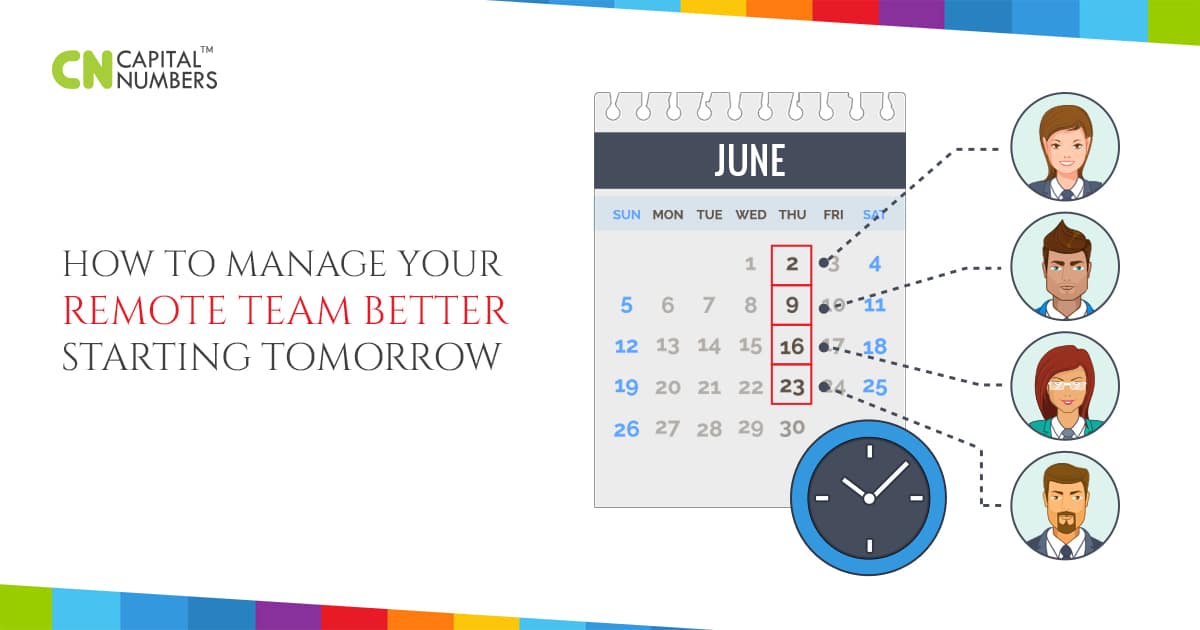How to Manage Your Remote Team Better Starting Tomorrow
Table of Contents
Working with a virtual team of remote hires has many upsides like most employers discover. As your office overhead costs come down and you begin working with the best of talent from across the world, you’ll soon be thanking yourself for making the decision when you did. However, like all workplaces, whether real-time or virtual, you’ll face a bunch of challenges. In fact, working with freelancers can change the dynamics of the workplace completely. On the other hand, technology with its many developments has made it extremely easy to iron out the snags and continue to run your operations efficiently. Here are some of the most common issues many employers face and how to work your way around them.
Aligning and Coordination
Given that different people are working on the various segments of the operations, it becomes very vital to ensure that their activities are carefully aligned with one another. If you have a small enterprise, you might prefer to oversee the functioning yourself. But, if you run a larger setup, you could assign a project manager to run the operations and provide you with regular updates. Thus, communication is the key. Choose a single platform where all conversations and messages can be exchanged. In this way, you can instantly instantly convey each instruction to every member of the team. Request that everyone send in acknowledgements that they have received the messages.
You might also want to schedule a one-on-one meeting with each of your remote hires, at least once a week. Make yourself available to answer questions and solve problems. To keep your team working efficiently, you’ll need to create a personal connection with them.
Ensuring Timely Task Completion
Making sure that deadlines are met on time is very essential for the business to run smoothly. You’ll want to ensure that you’re able to deliver products and services on time to your customers. To make sure everyone is performing on schedule despite the time zone differences, create spreadsheets or use any other web application. Put down all the tasks and deadlines and ask your team members to update it each time they complete an assignment. This strategy can also help you in more ways than one. The workflow is maintained and each worker knows when one segment is complete and it’s time to begin with the next. When it’s time to make payments for the work the remote workers do for you, you’ll only need to check the spreadsheet or app.
Dealing with Freelancer Personal Issues
Like your in-house team, you’ll have to deal with situations where your people are sick, need to take vacations or have personal and family issues to manage. A smart employee prepares for such situations in advance. Plan your team in such as way so that even if one freelancer is not available, you have a backup person who can deal with the tasks. If you can find remote hires that are adept at managing more than one activity, they could help you overcome this snag. You could also schedule the different stages of the project in such a way that even if there are delays in receiving assignments, the deadline of the project is not affected. Advance planning always pays off.
Locating Files Easily
Given the volume of emails and communication exchanged back and forth, locating files and assignments when they are sent as attachments can become tricky. A better option is to get your team to use cloud storage and allow access to multiple stakeholders. Create different folders of the various tasks and assignments and get your remote hires to upload data in the correct folders. This strategy can help not just you, but also your freelancers to locate the files easily.
Any kind of business has to deal with operational challenges from time to time. But, a smart entrepreneur can work around them using the appropriate technology, and ensure that the enterprise continues to perform efficiently.


 Web Development
Web Development Cloud Engineering
Cloud Engineering Mobile App Development
Mobile App Development AI/ML/GenAI
AI/ML/GenAI E-commerce
E-commerce Software Development
Software Development UI/UX
UI/UX QA
QA Dedicated Teams
Dedicated Teams











